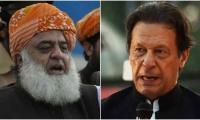The detention of award-winning Kashmiri human rights activist Khurram Parvez by India’s National Investigating Agency (NIA) has triggered worldwide criticism.
For a long time now, India has gradually but steadily been quashing dissenting voices in Occupied Kashmir. Khurram’s imprisonment is considered a part of the larger ongoing crackdown so that no one is able to collect any evidence of the state atrocities in Kashmir or raise a voice against state repression in the valley.
Forty-four-year-old Khurram has long been a leading figure in the field of human rights and civic activism, earning international accolades. Khurram’s contribution in highlighting the rights abuses in Occupied Kashmir is exceptional which he did along with a small but dedicated team of experts and his organisation Jammu Kashmir Coalition of Civil Society (JKCCS), founded in 2000 – producing a plethora of work on human rights violations, including disappearances, torture and mass graves substantiated by solid evidence and research.
His relentless efforts and work for human rights in Kashmir cost him heavily. In 2004, he lost his leg to a landmine blast while monitoring elections in northern Kashmir. In 2016, he was booked under the controversial Public Safety Act, globally known as a black law, for 76 days. Now, NIA has again put him behind the bars in a terror funding case – most likely a concocted story, in order to prevent him from working on the human rights issues. His arrest stirred a global outcry. Besides human rights bodies and activists, famous writer Noam Chomsky, UN Special Rapporteur on Human Rights Defenders Mary Lawlor, Amnesty International – all unanimously condemned his detention and sought his immediate release.
Although India’s human rights record in Kashmir has always been dismal, the frequency and intensity of violent incidents showing human rights abuses have increased manifold over the past few months. The significant escalation in civilian killings, troops’ reinforcement and target killings has beaten all past records.
Excessive use of military force seems to be a fundamental ingredient of India’s current approach towards Occupied Kashmir. Former Indian external affairs minister Yashwant Sinha, in a recent interview, substantiated this contention. He said that the use of brute forces in Kashmir was the new doctrine of the current Indian government. He also revealed that a high-ranking official confessed to him that New Delhi would no longer engage Kashmiris in talks. It shows that the idea of initiation of a political process for the restoration of statehood or Article 370 is no longer on Modi’s platter.
Recently, four Kashmiri citizens were killed in Srinagar, two of them labelled as Over Ground Workers (a term coined to describe people who are closely associated with militant outfits) and buried in a far-flung area. The families of these deceased people staged a protest and vehemently denied the allegation that the assassinated members of their families had any link to the militants. The victims’ families believed that they were used as a ‘human shield, declaring these custodial killings and cold-blooded murder in broad daylight. Despite the public reaction, media hype and the protest of the victims’ families, it took them a long duration of 76 hours to bring back the dead bodies and bury them in the neighbourhood. The authorities allowed limited family funerals under strict official watch.
In this context, a few observers are expressing fears that Khurram may be implicated in false terrorism-related cases by the Indian authorities and will have to remain in jail for some time. Therefore, sustained global attention is required to make sure his well-being and immediate release.
The Indian authorities aim to silence his voice and, in the process, also scare other rights groups to work on Kashmir. Additionally, almost all the major Hurriyat leaders have either been rounded up or are under house arrest. A large number of pro-freedom activists and any individuals identified as a threat to peace were also swept into preventive custody. Keep in mind that Kashmir is already not safe and accessible for members of independent human rights organisations.
Independent journalists or media outlets have compelled either to toe the official line or face the state’s wrath. Most Kashmiri citizens largely either do not follow the Indian national media or do not trust the narrative promoted by it. Consequently, it was vital to manage public perception, change the indigenous narrative and develop a state-sponsored information mechanism.
Post-August 5 Kashmir is being completely controlled and managed by New Delhi from New Delhi. The Indian authorities are also trying hard to tailor public perception and narratives according to their national interest. These days, only those publications are allowed whose content is in line with the state narrative or close to it. Journalists and editors who crossed red lines had to face consequences such as legal action or harassment.
The rising human rights violations and tension inside Occupied Kashmir or over Kashmir suit the BJP’s political and ideological agenda. Therefore, it is not willing to adopt an approach that saves innocent lives and brings peace and prosperity to the region. Majoritarian politics demands that the conflict should remain alive, and it would even be better to make it a Hindu-Muslim clash so that the majority population continues to support the BJP government, particularly in the upcoming state elections. A few days ago, Union Minister Jitendra Singh said at an event that a leadership that had the will to abrogate Article 370 also has the capacity to retrieve ‘Pakistan-occupied Kahsmir’ – Azad Jammu and Kashmir and Gilgit-Baltistan – from the ‘illegal’ occupation of Pakistan.
This shows that in the coming days, Kashmiri people will be targeted further, and any chances of India-Pakistan rapprochement are doomed.
The writer is a freelance contributor.
Email: ershad.mahmud@gmail.com
Workplace therapy has tangible benefits like improving mental well-being as well as productivity
Philippines is integrating cryptocurrencies to streamline its $36 billion remittance industry
PM has announced educational emergency to bring 26 million out-of-school children back to classrooms
There were dozens of sessions that attracted thousands of participants who remained engaged with discussions
So for now between government and PTI it’s Maoist dictum: da da tan tan – fight fight, talk talk
Like every year, 2024 brought along challenges and opportunities







